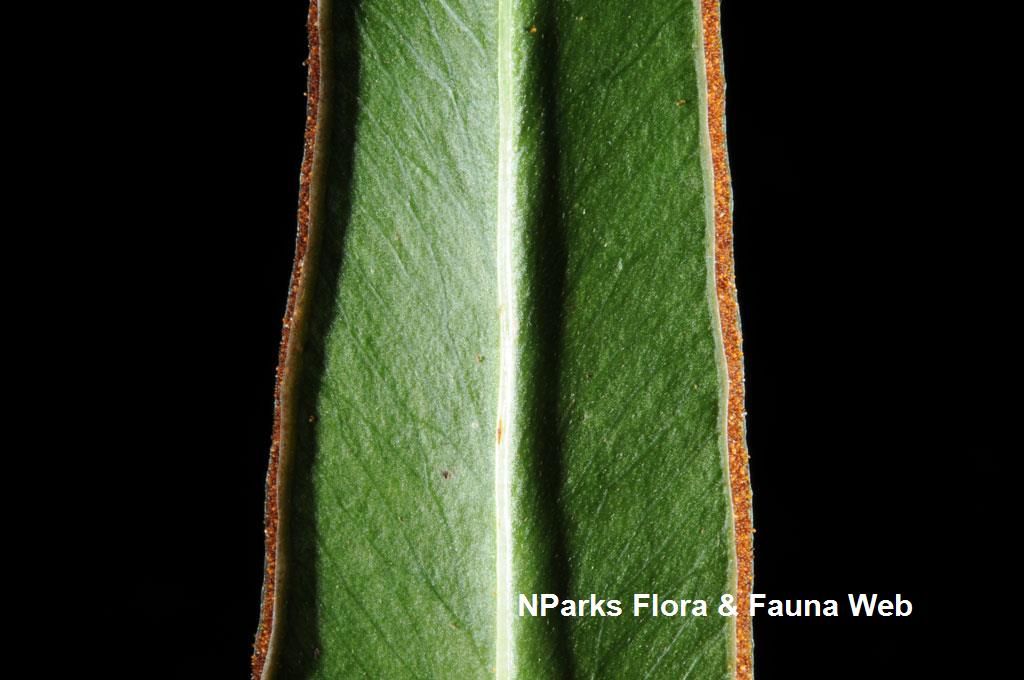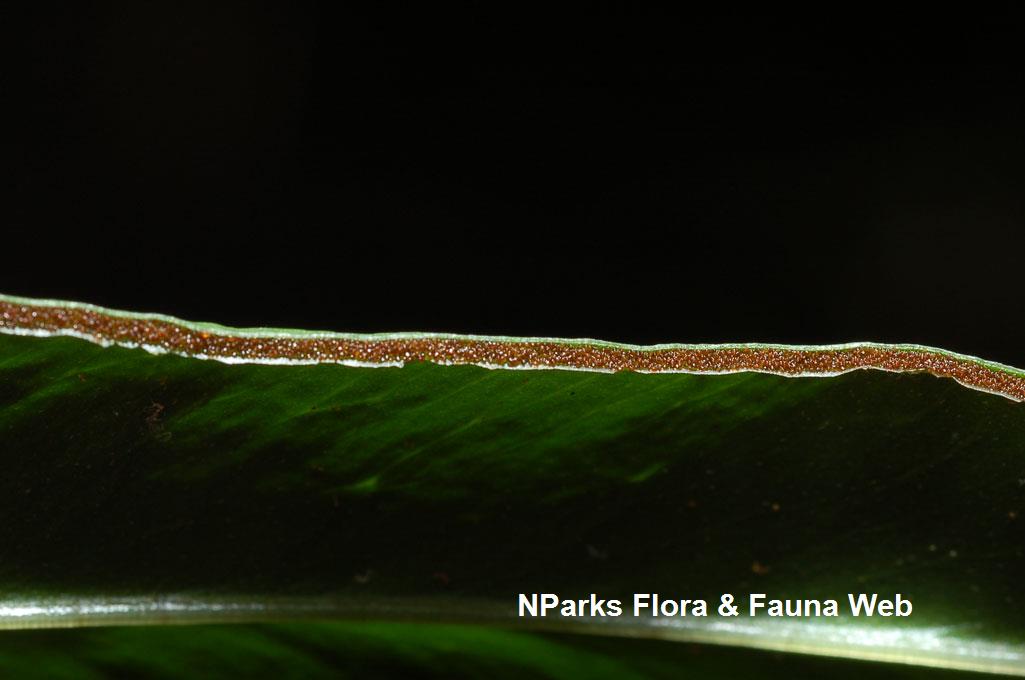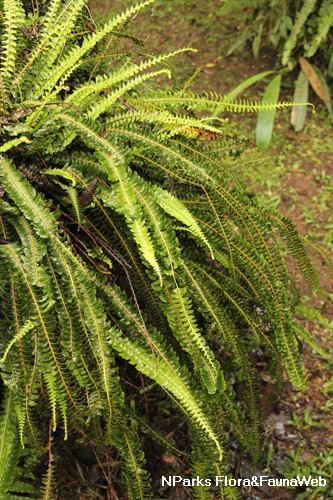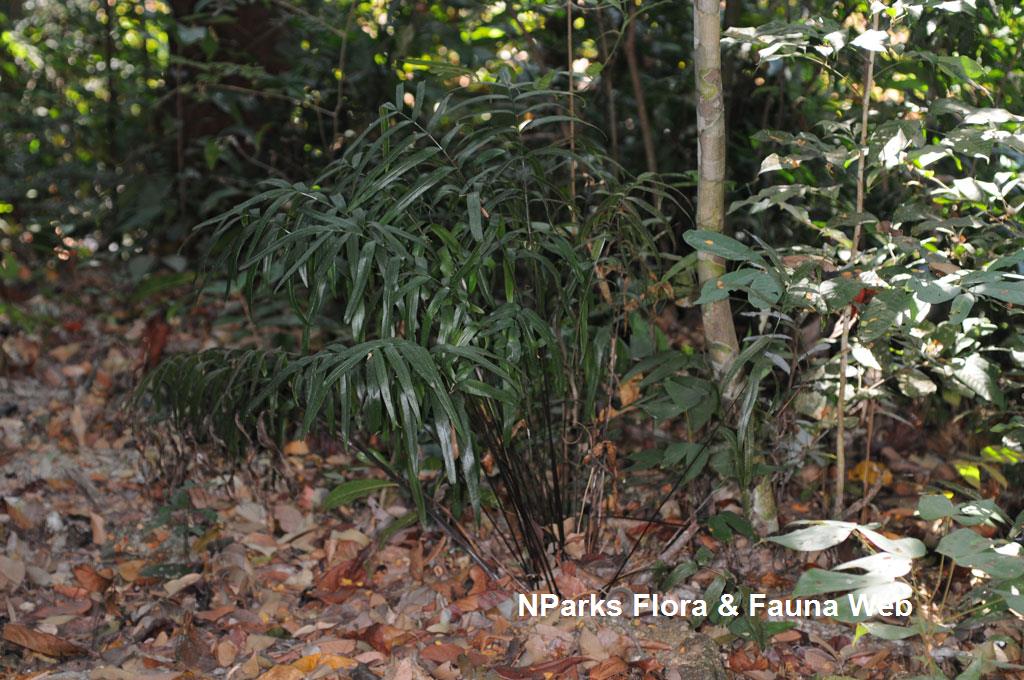
Back
Lindsaea ensifolia Sw.
| Family Name: | Lindsaeaceae |
| Synonyms: | Lindsaea ensifolia Sw. subsp. ensifolia, Lindsaea ensifolia Sw. subsp. coriacea <1> |
Lindsaea ensifolia is a terrestrial fern native to Singapore. It has pinnate fronds with smooth margin clustered together and short-creeping rhizomes covered in stiff, brown, bristle-like scales. The sori is linear, continuous, produced on the margins protected by an indusia.
Name
Classifications and Characteristics
| Plant Division | Ferns & Lycophytes (Non-Seed Vascular Plants) (Fern) |
|---|---|
| Plant Growth Form | Herbaceous Plant |
Biogeography
| Native Distribution | Tropical and Subtropical Africa and Asia to West Pacific Islands. |
|---|---|
| Native Habitat | Terrestrial (Freshwater Swamp Forest, Primary Rainforest, Secondary Rainforest, Disturbed Area / Open Ground) |
| Preferred Climate Zone | Sub-Tropical / Monsoonal, Tropical |
| Local Conservation Status | Native to Singapore (Least Concern (LC)) |
Description and Ethnobotany
| Growth Form | It is a terrestrial fern with clustering foliage, up to 2 cm apart, sometimes found growing on the surface of rocks. |
|---|---|
| Foliage | The blade is thin, pinnate, simple when young, 15 - 45 cm long. Each leaflet is lanceolate to linear, measuring 10 - 22 cm long and 0.4 - 2.5 cm wide with a smooth margin. Sterile leaflets tend to have toothed margins. They are held on a long, angular stalk, 10 - 35 cm long, straw-coloured to reddish brown, parallel grooves may be present lengthwise. |
| Reproductive Parts - non-flowering plant | Sori is continuous, linear, produced along the margins, protected by a indusia, 0.4 - 0.5 mm wide. |
| Others - Plant Morphology | Rhizomes are short-creeping, up to 2.0 mm long and 1.0 - 2.5 mm wide, covered in light reddish brown scales that are bristle-like, stiff, toothed at the base. |
| Habitat | Occurs in swampy to moderately dry places, exposed or in light shade areas from sea level to 1750 m in altitude. <1> |
| Cultivation | It can be propagated by spores or rhizome cuttings. |
Plant Care and Propagation
| Light Preference | Full Sun, Semi-Shade |
|---|---|
| Water Preference | Moderate Water, Lots of Water |
| Plant Growth Rate | Moderate |
| Rootzone Tolerance | Fertile Loamy Soils, Moist Soils, Waterlogged Soils, Well-Drained Soils |
| Propagation Method | Spore, Storage Organ (Rhizome) |
Foliar
| Foliar Type | Compound (Odd-Pinnate) |
|---|---|
| Foliar Shape(s) | Non-Palm Foliage (Elliptical, Lanceolate) |
| Foliar Venation | Pinnate / Net |
| Foliar Margin | Entire, Dentate |
| Foliar Apex - Tip | Acuminate, Acute |
| Foliar Base | Cuneate |
Non - Foliar and Storage
| Stem Type & Modification | Herbaceous |
|---|---|
| Root Type | Underground (Fibrous Root) |
| Specialised Storage Organ(s) | Underground (Rhizome) |
References
| References | <1> Kramer, K.U. (1959). Lindsaea. In: Kramer, K.U. (ed.) Lindsaea Group. Flora Malesiana, ser. 2, Pteridophytes, vol. 1, pt. 3, pp. 212. Leiden: Rijksherbarium. |
|---|
Image Repository
Others
| Master ID | 34300 |
|---|---|
| Species ID | 8713 |
| Flora Disclaimer | The information in this website has been compiled from reliable sources, such as reference works on medicinal plants. It is not a substitute for medical advice or treatment and NParks does not purport to provide any medical advice. Readers should always consult his/her physician before using or consuming a plant for medicinal purposes. |

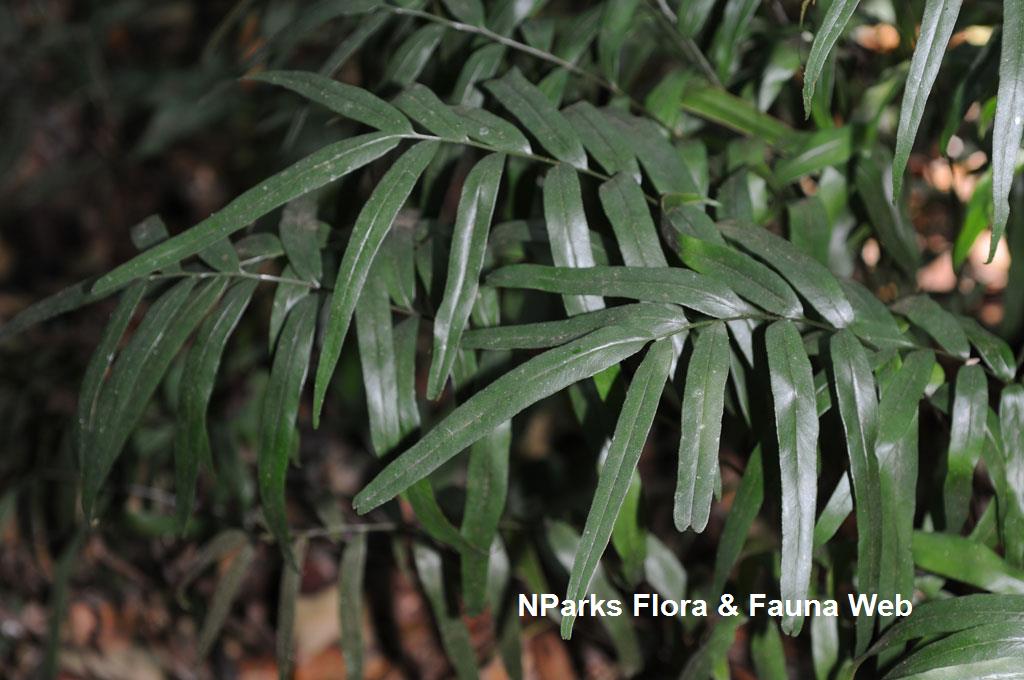
.jpg)
.jpg)
